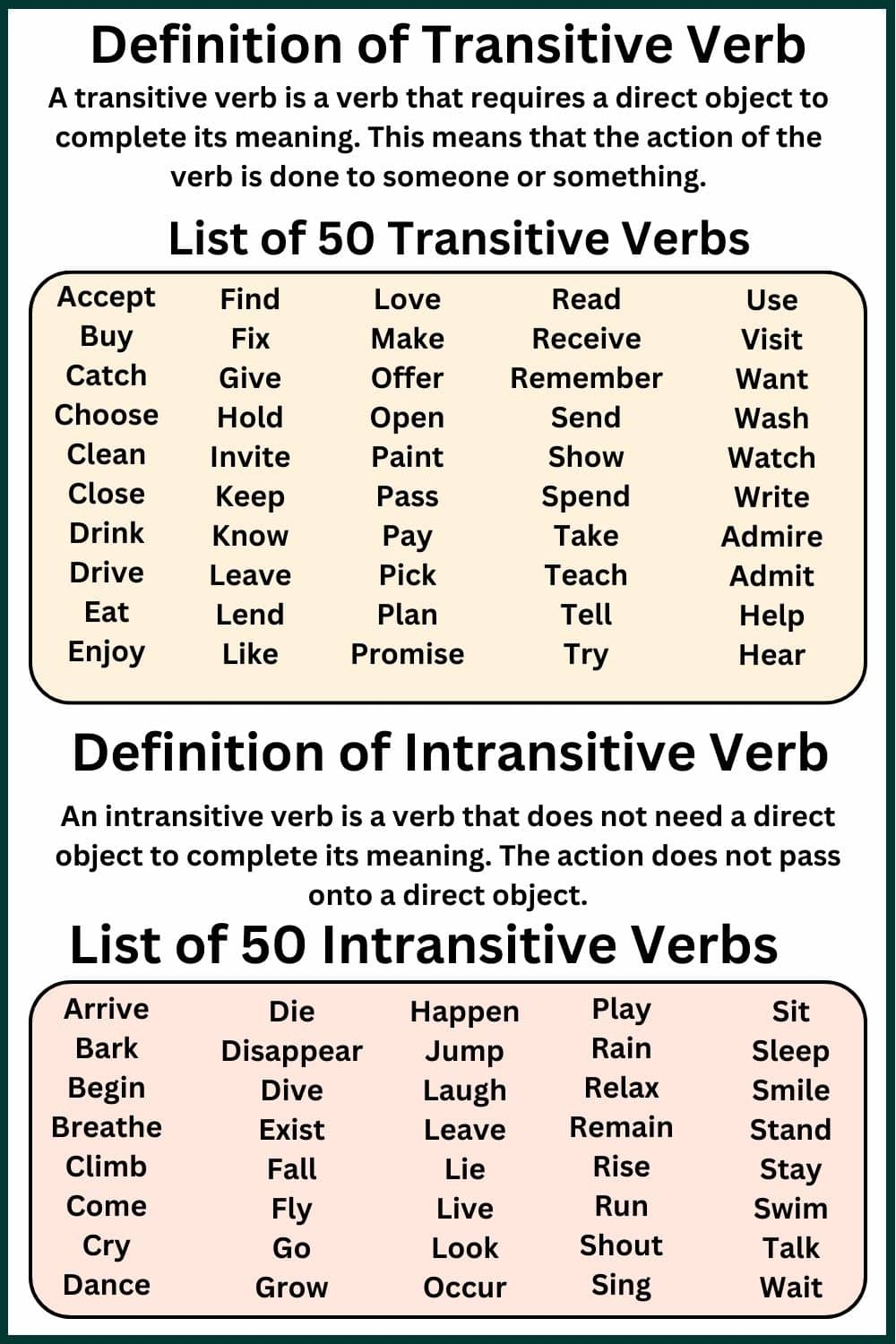Verbs are an essential part of a sentence as they indicate the action or state of being. Understanding the difference between transitive and intransitive verbs is crucial as it affects the structure of a sentence. Transitive verbs require a direct object to complete their meaning, while intransitive verbs do not. Let’s explore some examples of transitive and intransitive verbs to clarify this concept further.
In transitive verbs, the action is done to someone or something. For example, in the sentence “I read a book,” the verb “read” is transitive as it requires an object (book) to complete the action. Other examples of transitive verbs include “eat,” “write,” “kick,” and “throw.”
On the other hand, intransitive verbs do not require an object to complete the action. In the sentence “She sings beautifully,” the verb “sings” is intransitive as it does not have a direct object. Examples of intransitive verbs include “run,” “sleep,” “laugh,” and “arrive.”
Some verbs can function as both transitive and intransitive depending on the context. For instance, in the sentence “He runs a marathon,” the verb “runs” is transitive as it has a direct object (marathon). However, in the sentence “She runs every morning,” the same verb “runs” is intransitive as it does not require an object.
It is important to note that the presence or absence of a direct object determines whether a verb is transitive or intransitive. Understanding this distinction helps in constructing grammatically correct sentences and conveying the intended meaning effectively. Practice identifying transitive and intransitive verbs in sentences to improve your language skills.
In conclusion, transitive verbs require a direct object to complete their meaning, while intransitive verbs do not. Examples of transitive verbs include “eat,” “write,” and “kick,” while examples of intransitive verbs include “run,” “sleep,” and “laugh.” By recognizing the difference between transitive and intransitive verbs, you can enhance your writing and communication skills.
